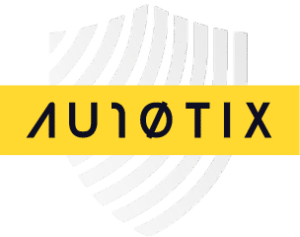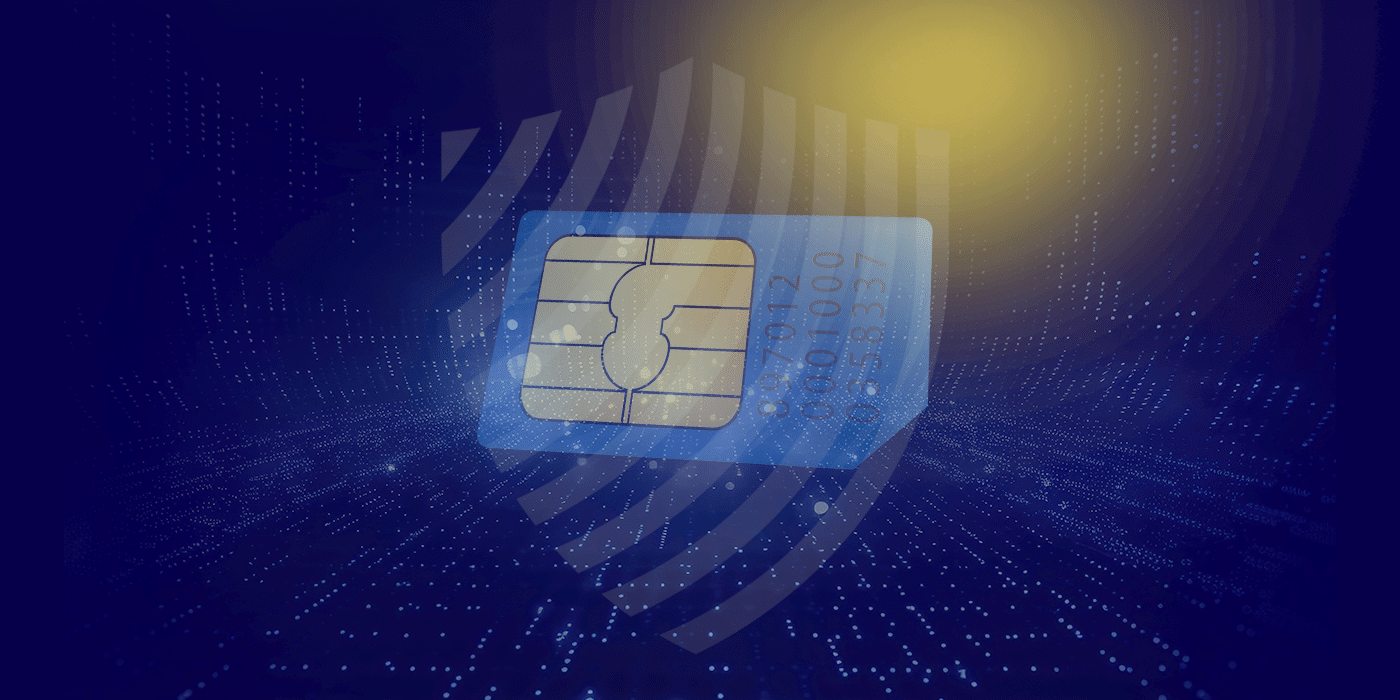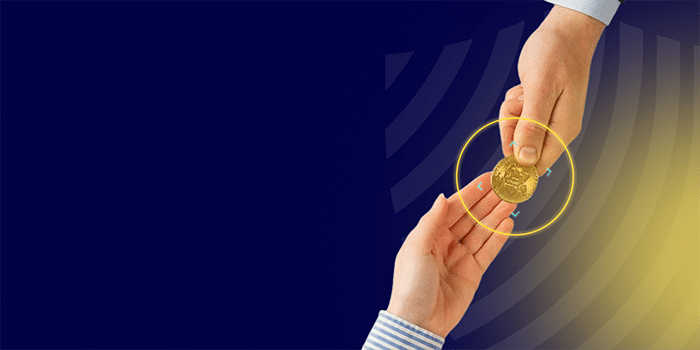How do you spot a fake check? Better question: what should you be looking for? Checks aren’t as easy to fake as you’d imagine. They come with a unique, “built-in” security feature called microprint that makes them hard to duplicate, and here’s all you need to know about this security measure and how it works to prevent fraud.
Examples of Microprinting on Checks:

According to the US treasury, words typically added to checks as microprint include “AUTHORIZED SIGNATURE,” “MICROPRINT SECURITY,” and “ORIGINAL DOCUMENT.”

Checks printed by a U.S. federal agency may show the agency’s name, “USA,” or “UNITED STATES OF AMERICA”.

The endorsement line on the back of all USA-issued checks contains microprinting that says “USAUSAUSA”.
What is a Microprint on a Check?
Microprint is a security feature commonly used on checks and other secure documents. It’s added as text or patterns in an extremely small font that’s difficult to reproduce accurately with standard photocopying or scanning technology.
To the naked eye, microprint often appears as a solid line or a simple pattern, but when viewed under magnification, it reveals detailed text or intricate designs. This is especially crucial as microprint helps deter fraud and forgery by making it easier to spot counterfeits or altered documents.
What is Microprinting?
Microprinting is a printing security technique where very small text or patterns (microprint) are applied to a document. It’s also difficult for standard photocopying and scanning equipment to reproduce these fine details accurately.
When a document with microprinting is copied, its text usually becomes distorted or blurred, a sign that the document might be a counterfeit.
Because of this unique approach to protecting originality, microprinting is a common feature in various secure documents, including currency, checks, identity cards, and other items requiring authenticity verification.
Microscopic Words on a Check
When printed, microscopic words on a check are often used in areas such as the signature line (often marked with “MP” for microprint), the border of the check, and other key sections.
The purpose of these microscopic words is to enhance the security of the check against forgery and counterfeiting.
Standard photocopiers and scanners generally cannot replicate these tiny details accurately, so any copied or forged checks will usually have blurred or indistinct microprinting, making it easier to identify them as non-original. This feature is a crucial part of many modern security designs in bank checks and other sensitive financial documents.
How does Microprinting work?
Microprinting uses specialized printing technology to create tiny, precise features.
While often thought of as just text, microprint can include intricate patterns or images, a variance that can depend on the document and the level of security required.
In unique cases, microprint might contain information relevant to the document itself, like serial numbers or signatures. More common instances of microprint might simply be a repeating pattern or a series of characters designed to confirm authenticity.
How Does Microprinting on a Check Work?
Microprinting on checks can be in the form of text or pattern and is usually incorporated into various parts of the check, including lines, borders, or backgrounds. Specifics can vary depending on the technology and equipment used, but here’s a look at the steps typically followed:
Designing the Microprint: This involves choosing the text, symbols, or patterns that will be used and setting them to a very small scale. Microprint should be legible under magnification but appear as a line or pattern to the naked eye.
Selecting the Printing Technology: Microprinting requires precise printing technology capable of producing extremely small and detailed prints making specialized printers with high resolution necessary.
Incorporating into the Check Design: The selected microprint is integrated into the check’s design and can be added to various parts of the check, such as the signature line, borders, or other key areas.
Testing and Verification: Once printed, a testing and verifying step is completed for legibility under magnification. This ensures the security feature is effective and meets the necessary standards.
Quality Control: Regular quality control checks are typically conducted to ensure consistency and reliability in the microprinting process.
An Example of Microprinting on a Check
An example of microprinting on a check is often found on the signature line. It may appear as a simple line, but it is actually composed of repeating tiny text. The phrase “AUTHORIZED SIGNATURE” is commonly used and is printed repeatedly in microprint.
According to the US Treasury, words typically added to checks as microprint include “AUTHORIZED SIGNATURE,” “MICROPRINT SECURITY,” and “ORIGINAL DOCUMENT.”
Where a check has been printed by a U.S. federal agency, it may show the agency’s name, “USA,” or “UNITED STATES OF AMERICA”. The endorsement line on the back of all USA-issued checks contains microprinting that says “USAUSAUSA”.
Why do we need Microprinting on Checks?
Microprinting on checks acts as an essential security and fraud prevention solution in the following ways:
Counterfeit Deterrence: Microprinting adds a layer of complexity that is difficult for counterfeiters to replicate. The fine details of microprint are hard to reproduce accurately with standard copying or printing equipment, making it easier to distinguish original checks from forgeries.
Verification of Authenticity: Microprinting allows for the verification of a check’s authenticity. When examined under magnification, genuine microprinting is clear and legible, whereas copies or counterfeit checks will often show blurred or distorted microprint.
Tamper Resistance: Checks with microprinting are more resistant to tampering. Alterations made to areas with microprint, like the signature line or other key sections, become more noticeable, indicating potential fraud.
Compliance with Standards: Incorporating microprinting on checks aligns with banking and security standards, ensuring that checks meet the required criteria for security features in financial documents.
Overall, microprinting is a crucial security feature for checks, significantly enhancing their integrity and reducing the risk of fraud.
Is Viewing Microprinting Possible?
Yes, viewing microprinting is possible, but it typically requires some form of magnification. Microprinting involves creating very small text or patterns that are not clearly visible to the naked eye. This small scale is precisely what makes it a valuable security feature in preventing forgery and counterfeiting.
What is a Microprint Signature Line?
A microprint signature line is a specific application of microprinting technology used primarily on checks and other financial or legal documents. It’s a subtle yet effective way to enhance document security because it leverages the difficulty of replicating such fine detail with standard printing methods.
Instead of a regular solid line where the signature is to be written, the signature line is created out of tiny text, printed so small that it appears to be a simple line to the naked eye.
Should the check be photocopied or scanned, the signature line will appear distorted or blurred, proving the copy or scan is counterfeit.
In many cases, the distinct “MP” (microprint) notation near the signature line alerts the recipient to look for these legible little words as a sign of authenticity.
Alternatives to Microprinting On a Check
While microprinting is a common security feature on checks, there are several other methods used to enhance check security and prevent fraud:
Watermarks
Watermarks are subtle images or patterns embedded into the paper of a check. They are visible when held up to the light and are difficult to replicate accurately in counterfeit checks.
Holograms
Holograms are three-dimensional images that change appearance when viewed from different angles. They are challenging to forge and are often used on checks for added security.
Magnetic Ink Character Recognition (MICR)
MICR is a technology used to print characters in special ink that can be read by electronic processing systems. This makes it harder to alter the printed information on the check.
Security Threads
Some checks incorporate security threads, which are thin embedded strips visible when held against the light, adding an extra layer of protection.
Chemical Sensitivity
Some checks are made with paper that reacts to attempts of chemical alteration, changing color, or displaying visible signs when tampering occurs.
The Check Payment Systems Association Padlock Icon
Checks may also show a small padlock as a mark certification of the Check Payment Systems Association. This padlock indicates that the check has been created with enhanced security features.
These alternatives, often used in combination, provide a comprehensive defense against fraud and counterfeiting, ensuring the authenticity and security of checks.
Wrapping up
Check forgery may appear easy to perpetrate, however, the use of microprint makes it hard to circumvent these detailed and complex security measures. If faced with the prospect of receiving a check, perform due diligence. Work with a bank to verify the check’s authenticity to avoid any nasty surprises.







